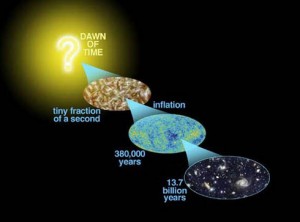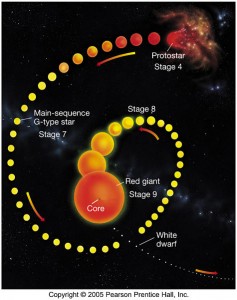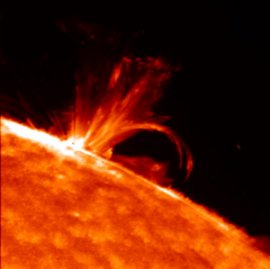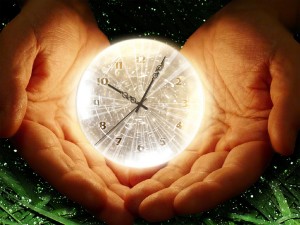Creation: “Big Bang” meets “A Star is Born!”
 A guest post today from my brilliant husband, Gregg.
A guest post today from my brilliant husband, Gregg.
The 6 types of evolution taught in the average public school, the first 5 being types of Darwinian evolution, and the last being simple modifications within kind or changes within kind and not even technically “evolution” are:
- Cosmic evolution
- Stellar evolution
- Chemical evolution
- Abiogenesis—Life from non-life
- Macro-evolution
- Micro-evolution (Changes within kind – not really evolution)
Cosmic evolution meets Steller Evolution
As I stated in my posts on Cosmic Evolution, there are two main categories of problems with the Big Bang theory, the currently accepted theory of how the universe and all space, time, and matter came into existence. There are 1) clear logical problems and there are 2) thousands of scientific problems.
I highlighted a number of the logical problems in part one and a number of the scientific problems in part two, and explored the Big Bang “evidence” in part three. Since the latter part of the Big Bang theory leads into Stellar Evolution, this separate post will detail some of the scientific problems that apply to both the Big Bang theory and numerous theories of Steller Evolution where the two overlap.

Big Bang Highlights:
According to the Big Bang theory, in the beginning, there was no matter, just nothingness. Then this nothingness condensed into a single, tiny dot that spun, got hot, and exploded. The resultant explosion produced protons, neutrons, and electrons which flowed outward at incredible speed throughout empty space; because there wasn’t any other matter in the universe. As these protons, neutrons, and electrons hurled themselves outward at supersonic speed, they supposedly formed themselves into typical atomic structures of mutually orbiting hydrogen and helium atoms.
According to the theory, the outward-racing atoms gradually began circling each another, producing gas clouds which then pushed together into stars. These first theoretical stars, called Proto-Stars, repeatedly exploded over and over and over again to produce heavier elements.
Finally, these giant clouds of gas and heavy elements started spinning and this eventually formed galaxy clusters, galaxies, stars, planets, moons — basically everything — all in perfect balance and in perfect order.
 Stellar Evolution from the Big Bang:
Stellar Evolution from the Big Bang:
According to the theory, the outward-racing particles are said to have gradually begun circling one another, forming atoms. These atoms then changed direction further, this time moving toward one another, and formed giant gas clouds which then pushed together into stars. This aspect of the Big Bang which outlines Stellar Evolution theory is even stranger than that which precedes it.
I have already shown that it is impossible, at least according to all known physical laws of the universe, for the Big Bang to have ever occurred in the first place. Once that was shown, I jumped the gap of simple reason to ASSUME that it COULD have occurred and demonstrated that it is flatly impossible for any particles to magically move toward each other, slow down, or change directions.
I will now disregard facts and reason once again in order to ASSUME that, contrary to logic and every known physical law:
- the particles DID magically manage to move toward one another and
- the particles COULD slow down and change directions.
Two Scientific Reasons This Cannot Occur
Gas molecules in outer space are widely separated. By “gas,” I mean atoms of hydrogen and/or helium which are separated from one another. All gas in outer space has a density so rarified (less dense; atoms more separated) that it is far less dense than the emptiest atmospheric vacuum pressure bottle in any laboratory in the world. Gas in outer space is rarer than anything on earth.
Neither hydrogen nor helium in outer space would clump together. In fact, there is no gas on earth that clumps together, either. Gas pushes apart; it does not push together. Separated atoms of hydrogen and/or helium would be even less likely to clump together in the vacuum of space.
Now, I will disregard facts and reason once again in order to ASSUME that the outward-moving, extremely fast, ever separating atoms shot out by the Big Bang explosion COULD slow down, change direction, and form themselves into immense clouds.
Because gas in outer space does not clump, the gas could not build enough mutual gravity to bring it together. Because it cannot clump together, it cannot form itself into stars. The idea of gas pushing itself together in outer space to form stars is a fiction not supported by any kind of science. Fog, whether on earth or in space, cannot push itself into balls. Once together, a star maintains its gravity quite well, but there is no way for nature to produce it. Getting it together in the first place is the problem. Gas floating in a vacuum cannot form itself into stars. Once a star exists, it will absorb gas into it by gravitational attraction. But before the star exists, gas will not push itself together to form a star, or a planet, or anything else. Since both hydrogen and helium are gases, they are good at spreading out, but not at all good at clumping together.
Careful analysis has revealed that there is not enough m atter in gas clouds to produce stars. Our sun is shedding over 400,000 tons of matter each and every second. If you were to wind the clock back adding 400,000 tons to our sun for even 5 billion years, you would come up with a gas cloud nearly as large as our galaxy. That is one enormous cloud of gas to condense down into a single sun and would require massive energy to do so. There are trillions of trillions of known stars in the universe and those are just the stars we know about.
atter in gas clouds to produce stars. Our sun is shedding over 400,000 tons of matter each and every second. If you were to wind the clock back adding 400,000 tons to our sun for even 5 billion years, you would come up with a gas cloud nearly as large as our galaxy. That is one enormous cloud of gas to condense down into a single sun and would require massive energy to do so. There are trillions of trillions of known stars in the universe and those are just the stars we know about.
Gas clouds in outer space expand; they do not contract. Yet they would have to contract to form anything. Any one of these points alone is enough to eliminate the stellar evolution theory.
If the Big Bang theory were true, instead of a universe of stars, there would only be an outer rim of fast-moving matter. The outwardly flowing matter and/or gas clouds would keep moving outward without ever slowing. In frictionless space, with no matter ahead of it to collide with, the supposed matter from the initial explosion would keep moving outward forever. This fact is as solid as the ones mentioned earlier.
 There would not be enough time for the gas to reach the currently known expanse of the universe, so it could form itself into stars. Darwinists tell us that the Big Bang occurred 10 to 15 billion years ago, and stars were formed 5 billion years later. They only allow about 2½ billion years for the gases to clump together into stars. This dating problem has been caused by the discovery of supposedly faraway quasars, some of which are dated at 15 billion light-years, since they have a redshift of 400 percent. That would make them 15 billion years old, which is too old to accommodate the Big Bang theory. Simple arithmetic reveals there is not enough time.
There would not be enough time for the gas to reach the currently known expanse of the universe, so it could form itself into stars. Darwinists tell us that the Big Bang occurred 10 to 15 billion years ago, and stars were formed 5 billion years later. They only allow about 2½ billion years for the gases to clump together into stars. This dating problem has been caused by the discovery of supposedly faraway quasars, some of which are dated at 15 billion light-years, since they have a redshift of 400 percent. That would make them 15 billion years old, which is too old to accommodate the Big Bang theory. Simple arithmetic reveals there is not enough time.
In order for the gas to produce stars, it would have to move in several directions. First, it would have to stop flowing outward. Then it would have to begin moving in circles (stellar origin theories generally require rotating gas). Then the rotating gas would have to move closer together. But there would be nothing to induce these motions. The atoms from the supposed Big Bang should just keep rushing outward forever. Linear motion would have to mysteriously change to angular momentum.
A quantity of gas moving in the same direction in frictionless space is too stable to do anything but keep moving forward. Newton’s Laws of Motion dictates that an object once in motion will remain in motion unless acted upon by an outside force. Since, in the Big Bang theory, there are NO other outside forces, the outflowing gas would simply remain in motion on their original vector forever.
 Gas in outer space that circles a common center would fly apart, not condense together. This goes back to Newton’s Laws of motion dealing with circular motion and centripetal force. Think of a kid on a merry-go-round. If he isn’t able to hold onto anything, like gas is unable to hold onto anything, then he is going to fly off when that thing starts to spin.
Gas in outer space that circles a common center would fly apart, not condense together. This goes back to Newton’s Laws of motion dealing with circular motion and centripetal force. Think of a kid on a merry-go-round. If he isn’t able to hold onto anything, like gas is unable to hold onto anything, then he is going to fly off when that thing starts to spin.
There is not enough mass in the universe to accommodate the various theories of origin of matter and stars. The total mean density of matter in the universe is about 100 times less than the amount required by the Big Bang theory. The universe has a low mean density. To put it another way, there is not enough matter in the universe. This “missing mass” problem is a major hurdle, not only to Big Bang enthusiasts but also to Expanding Universe theorists.
Hydrogen gas in outer space does not clump together. The problem is twofold: (1) The density of matter in interstellar space is too low. (2) There is nothing to attract the particles of matter in outer space to stick to one another.
It is a physical law that gas in a vacuum expands instead of contracts. Because of this law, gas cannot form itself into stars, planets, etc. That which cannot happen, cannot happen given any amount of time.
From this point of demarkation onward, Big Bang becomes a pure rationalization for Steller Evolution which deserves its own space (pardon the pun).
 The Truth:
The Truth:
Embracing theories that have no basis in fact, that pervert science into a political or religious agenda, only serves to add to the collective ignorance of mankind. In life, when one ignores, obfuscates, or discounts facts, one is embracing an agenda. The Darwinian agenda is responsible for bringing actual scientific discovery nearly to a halt for half a century. The Darwinian worldview is responsible for outright lies in science journals and textbooks as well as hundreds of hoaxes, frauds, and erroneous experiments.
It is also the directly attributable documented rationalization behind kidnappings, slavery, murder, and even genocide. That is not an agenda anyone with a soul ought to willingly embrace.
 The truth is that no one living or dead has ever proposed a reasonable explanation for the formation of the universe, galaxy clusters, galaxies, stars, planets, moons, and all of the organized systems contained therein absent a Creator.
The truth is that no one living or dead has ever proposed a reasonable explanation for the formation of the universe, galaxy clusters, galaxies, stars, planets, moons, and all of the organized systems contained therein absent a Creator.
The truth is that real science has never supported any kind of theory that leaves out the Architect. Real science and actual logic support a notion that is very well outlined in the first chapter of Genesis which reveals to man how God created light and darkness and separated them, how He created the heavens and the earth, the waters and the land, and every living thing. Then it reveals how God created man, male and female created He them, in His image.
God bless you and yours. Gregg
Resources:
Additional Posts dealing with Creation and Darwinism

